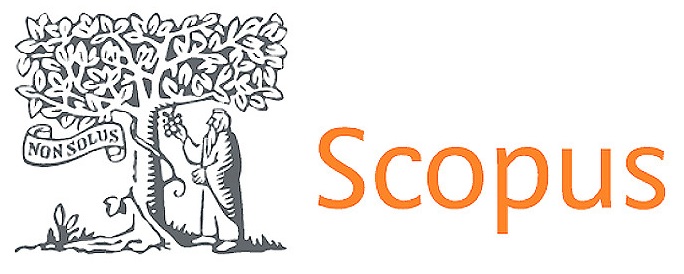A Cross-Cultural Leadership Behavior Prediction Model for Advancing Organizational and Global Management Practices
DOI:
https://doi.org/10.62486/agma2025161Keywords:
Cross-cultural leadership, Leadership behavior, Initiation of Structure, Scalable Golden Jackal Optimizer-driven Stacked Random Forest (SGO-SRF)Abstract
In today’s globally interconnected environment, recognizing culturally preferred leadership behaviors is dynamic for effective organizational and global management. This research presents a cross-cultural leadership behavior prediction model that employs advanced machine learning (ML) techniques to analyze and forecast leadership preferences across diverse cultural contexts. The research gathers data from Kaggle, comprising 6,945 responses across five countries, to analyze behavioral, demographic, and cultural aspects, and employs preprocessing techniques for improved model reliability. The model employs algorithms, such as the Scalable Golden Jackal Optimizer-driven Stacked Random Forest (SGO-SRF) to predict and uncover patterns in leadership behavior preferences. Cultural indicators and demographic features are analyzed using Recursive Feature Elimination (RFE) to identify their impact on these various leadership dimensions. The model was primarily applied using a baseline Random Forest (RF), then established through a Stacked RF approach, and finally optimized using the proposed hybrid SGO-SRF, which attained the highest performance across all evaluation metrics. The hybrid method was implemented in Python and it demonstrated superior performance, achieving higher accuracy (92.11%), F1-scores (88.09%), precision (81.98%), and Recall (85.19%). The research reveals that cultural values significantly influence leadership preferences, with long-term orientation affecting uncertainty tolerance, restraint affecting integration, and entrepreneurial values influencing structure, production emphasis, and predictive performance.
References
Sagbas M, Oktaysoy O, Topcuoglu E, Kaygin E, Erdogan FA. The mediating role of innovative behavior on the effect of digital leadership on intrapreneurship intention and job performance. Behavioral sciences. 2023 Oct 23;13(10):874. DOI: https://doi.org/10.3390/bs13100874
Tsai CJ. Cross-cultural leadership behavior adjustment and leader effectiveness: A framework and implications. International Studies of Management & Organization. 2022; 52(3–4):205–225. https://doi.org/10.1080/00208825.2022.2131232 DOI: https://doi.org/10.1080/00208825.2022.2131232
Shmueli G, Tafti A. How to “improve” prediction using behavior modification. International Journal of Forecasting. 2023; 39(2):541–555.https://doi.org/10.1016/j.ijforecast.2022.07.008 DOI: https://doi.org/10.1016/j.ijforecast.2022.07.008
Sacavém A, de Bem Machado A, dos Santos JR, Palma-Moreira A, Belchior-Rocha H, Au-Yong-Oliveira M. Leading in the Digital Age: The role of leadership in organizational digital transformation. Administrative Sciences. 2025; 15(2):43. https://doi.org/10.3390/admsci15020043 DOI: https://doi.org/10.3390/admsci15020043
Porfírio JA, Carrilho T, Felício JA, Jardim J. Leadership characteristics and digital transformation. Journal of Business Research. 2021; 124:610–619.https://doi.org/10.1016/j.jbusres.2020.10.058 DOI: https://doi.org/10.1016/j.jbusres.2020.10.058
Chatterjee S, Chaudhuri R, Vrontis D. Examining the role of cross-cultural factors in the international market on customer engagement and purchase intention. Journal of International Management. 2022; 28(3):100966.https://doi.org/10.1016/j.intman.2022.100966 DOI: https://doi.org/10.1016/j.intman.2022.100966
Irfan M, Salameh AA, Saleem H, Naveed RT, Dalain AF, Shahid RM. Impact of servant leadership on organization excellence through employees’ competence: Exploring a cross-cultural perspective. Frontiers in Environmental Science. 2022; 10:985436. https://doi.org/10.3389/fenvs.2022.985436 DOI: https://doi.org/10.3389/fenvs.2022.985436
Arseneault R, Roulin N. A theoretical model of cross‐cultural impression management in employment interviews. International Journal of Selection and Assessment. 2021; 29(3–4):352–366.https://doi.org/10.1111/ijsa.12348 DOI: https://doi.org/10.1111/ijsa.12348
Lee C. Artificial Neural Networks (ANNs) and Machine Learning (ML) modeling employee behavior with management towards the economic advancement of workers. Sustainability. 2024; 16(21):9516.https://doi.org/10.3390/su16219516 DOI: https://doi.org/10.3390/su16219516
Downloads
Published
Issue
Section
License
Copyright (c) 2025 Honganur Raju Manjunath, Manoranjan Parhi, Rakhi Chakraborty, Thabassum Khan, Ramya G Franklin, Suraj Bhan, Yogesh Jadhav (Author)

This work is licensed under a Creative Commons Attribution 4.0 International License.
The article is distributed under the Creative Commons Attribution 4.0 License. Unless otherwise stated, associated published material is distributed under the same licence.





